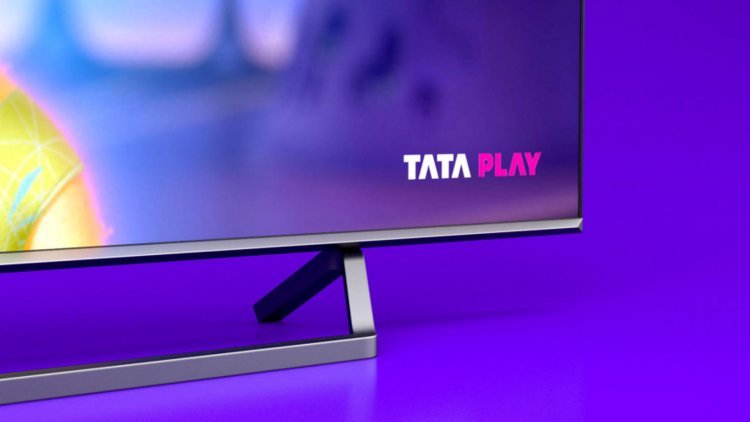Why the performance of the IPO-bound Tata Play would be under strain in FY23
With more individuals cutting the cord and opting for streaming platforms for content, the company's average income per user and active subscriber count have declined. Competition from DD Free Dish, a free-to-air satellite TV provider, isn't helping.

Analysts predict that Tata Play, one of the leading direct-to-home (DTH) players, will suffer a decline in its DTH business as it prepares for an initial public offering (IPO) of Rs 2,500 crore.
The company, which was previously known as Tata Sky, relaunched itself last year. It provides DTH services. It also aggregates streaming platforms through Tata Play Binge, which houses approximately 17 over-the-top (OTT) platforms, and has a broadband service known as Tata Play Broadband.
With more individuals cutting the cord and choosing for streaming platforms for content, as well as competition from free-to-air satellite TV provider DD Free Dish, growth in the company's average revenue per user (ARPU) and active customer base has slowed. As a result, sales from Tata Play's primary business, DTH services, will fall in FY23, according to a Crisil Ratings research.
"DTH operators face risks as a result of technology improvements and changing user behaviour. Over-the-top (OTT) platform popularity may pose a danger in the medium to long term. With limited product differentiation, the DTH business faces fierce competition from DTH operators, cable TV operators, and Free Dish," according to Crisil Ratings.
Questions about financial performance submitted to Tata Play had not garnered a response as of the publication of this article.
The DTH business accounts for 96 percent of the company's total revenue.
The changing landscape
"If we look at the subscriber count today, we can see that Free-To-Air (FTA) is rising, MSOs are losing, and DTH is stable. Then there's linked TV (TV sets connected to the internet, usually used to watch streaming material), which has 10 million households now and is expected to grow to 20-25 million in the next three years, according to Karan Taurani, senior vice-president of Elara Capital. "In the next three years, we will reach 220 million TV households, with free-to-air and connected TV accounting for a substantial percentage of growth."
He went on to say that FTA and linked TVs will add approximately 15 million and 20-25 million homes, respectively. Connected TVs and FTA will account for 75 percent of the increase in TV households. DTH services will contribute only a minor percentage of growth.
According to Taurani, Tata Play's DTH business will be under pressure because linear TV and Pay TV are not adding many new households.
"DTH will grow at a 3-4 percent annual rate, but ARPUs will climb at a 6-7 percent annual rate due to channel price increases caused by the NTO's deployment (New Tariff Order). However, channel pricing begins to rise after around three years, so annual increase cannot be envisaged. So there are issues in the medium to long term "According to the analyst.
To increase pricing transparency, the Telecom Regulatory Authority of India (TRAI) adopted a new regulatory framework called NTO, often known as the MRP (maximum retail price) regime for TV channels, in 2019.
How the figures stack up
According to TRAI data, the number of paid direct-to-home (DTH) subscribers fell from 68.52 million in December 2021 to 66.92 million in March 2022. Pay DTH active subscribers increased to 67.04 million in June 2022.
At the end of March 2022, Tata Play has 23 million active pay customers.
The company generated direct-to-home (DTH) revenue of Rs 4,566.68 crore in FY22, a 0.57 percent decrease from Rs 4,593.01 crore in FY21. Tata Play's DTH segment was down 1.2 percent in FY21 from Rs 4,648.83 crore the previous fiscal year.
While Tata Play's consolidated operating revenue increased by 1.3 percent year on year in FY22 due to growth in broadband revenues and traction for the Tata Binge mobile application, operating margins are expected to be squeezed during FY23 due to operating losses from Tata Play Binge, according to Crisil Ratings.
In FY22, the company generated operational revenue of Rs 4,741.07 crore, up from Rs 4,682.21 crore in the previous year.
"The DTH industry has been under duress because to the onslaught of fiber/broadband. In addition, all local cable operators are transitioning to digital. Furthermore, with the arrival of OTT, cord cutting has begun, particularly in major cities," said Nitin Menon, co-founder of NV Capital. "Today, linear television is under fire, with many homes, particularly in major cities, watching their programming over broadband rather than traditional cable."
Tata Play is concerned about the loss and poor development of DTH subscribers, which has dropped to 32.8 percent as of June 30, 2022, from 33.4 percent a year earlier, according to TRAI data.
Industry-wide challenges
According to Crisil Ratings, the decline in the company's active subscriber base is the result of industry-wide headwinds from competition from DD Free dish and other expanding digital entertainment alternatives.
"People are moving to smart TVs from DTH, and as we move ahead we will see smart TV penetration. Set-top boxes may not have a role here unless they offer a combo pack of OTT apps and channels. There are concerns about the expansion of core DTH subscribers "Taurani stated.
He also stated that Tata Play will need to invest more in order to build a huge customer base for Tata Play Binge. "OTT players go for bulk deals, ergo, this is a business of scale."
Tata Play Binge intends to raise the number of streaming platforms to 25 by the end of FY23, having achieved 10 lakh consumers in November of last year.
Menon stated that while the OTT and broadband businesses should develop, it would take time for these industries to become cash-flow positive.




 admin
admin 




















